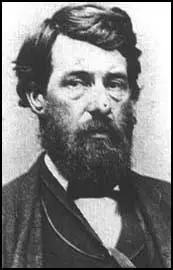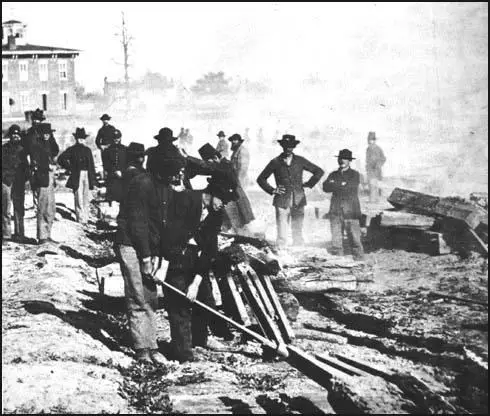George Barnard

George Barnard was born in Coventry, Connecticut, in 1819. He moved to Nashville, Tennessee as a child but returned to the North after leaving school.
Barnard became a photographer and opened his first studio in Oswego, in 1847. He also worked in Cuba before moving to New York where he was employed by Matthew Brady.
On the outbreak of the American Civil War there was a dramatic increase in the demand for work at Brady's studios as soldiers wanted to be photographed in uniform before going to the front-line. The following officers in the Union Army were all photographed at the Matthew Brady Studio: Nathaniel Banks, Don Carlos Buell, Ambrose Burnside, Benjamin Butler, George Custer, David Farragut, John Gibbon, Winfield Hancock, Samuel Heintzelman, Joseph Hooker, Oliver Howard, David Hunter,John Logan, Irvin McDowell, George McClellan, James McPherson, George Meade, David Porter, William Rosecrans, John Schofield, William Sherman, Daniel Sickles, George Stoneman, Edwin Sumner, George Thomas, Emory Upton, James Wadsworth and Lew Wallace.
In July, 1861, Matthew Brady and Alfred Waud, an artist working for Harper's Weekly, travelled to the front-line and witnessed Bull Run, the first major battle of the war. The battle was a disaster for the Union Army and Brady came close to being captured by the enemy.
Soon after arriving back from the front Matthew Brady decided to make a photographic record of the American Civil War. He sent Barnard, Alexander Gardner, James Gardner, William Pywell, Timothy O'Sullivan and seventeen other men to travel throughout the country taking photographs of the war. Each one had his own travelling darkroom so that that collodion plates could be processed on the spot.
Matthew Brady continued to take credit for the photographs taken by his employees. Unhappy with this policy, Barnard, like Alexander Gardner and Timothy O'Sullivan, left Brady's employment in 1863.
In 1864 Barnard became a photographer for the Military Department of the Mississippi under General William Sherman. He accompanied Sherman in his Atlanta Campaign. This resulted in the publication of his book of 61 photographs, Photographic Views with Sherman's Campaigns (1866).
After the war Sherman moved to Chicago but his studio was destroyed by fire in 1871. He also had a studio in Charleston that was damaged by an earthquake. In 1884 he began work with the Rochester Photographic Association. George Barnard died at the home of his daughter, in Onondaga, on 4th February, 1902.

troops pulling up railroad tracks in Atlanta (1864)
